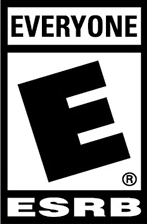
Miyamoto's Magic And Imagination ...

Game Specs for The Legend Of Zelda
NOTE: When possible, the game's official manual or official documentation from the game maker's company or Nintendo is used — with spelling or terminology presented as is, despite some translation errors.SPOILER ALERT: Some of the categories below may have a question mark to conceal important or secret revelations in the game. If you would like to see the unknown revealed, a rollover option or external link will be attached to the question mark.
| Title |  The Legend Of Zelda |
||||
| Company |  Nintendo |
||||
| Developer(s)/Designer(s): |
| ||||
| Composer(s)/Musician(s): |
|
||||
| Year: | 1986 | ||||
| Release Date: | U.S. - August 1987 | ||||
| System: |  NES |
||||
| Genre: | Adventure RPG | ||||
| Ratings/Suitable For Age Group?: |  E for Everyone (Mild Fantasy Violence) |
||||
| Arcade Version?: | No | ||||
| Port To Other Game Systems: |
Included in NES Classic Edition (Direct Port of NES),

(Nintendo 3DS) Virtual Console as a digital download from the Nintendo eShop 
and (Nintendo Switch) Nintendo Switch Online Service. 
|
||||
| Part of Franchise: |
|
||||
| Rarity/Availability: |
Included in NES Classic Edition (Direct Port of NES),

on the Nintendo 3DS Virtual Console (as a download from Nintendo eShop) and 
Nintendo Switch Online Service. 
Cartridge is fairly hard to find and becoming more expensive to buy (at least, in the St. Louis, MO metropolitan area). |
||||
| Add'l Game System Peripheral Needed To Play?: | N/A | ||||
| 1 or 2 Player: | 1 Player | ||||
| Number of Reserve Players: | Start with 1 Player | ||||
| 1-Up's | None | ||||
| Life Meter |  Yes. It increases as you earn and find Heart Containers. Can grow to 16 Heart Containers. |
||||
| Password | No | ||||
| Battery |   Yes |
||||
| Continue? |  Yes, but will begin at checkpoint from earlier point, usually start of Level or beginning of game |
||||
| Perspective/Orientation Gameplay | 2D and Screen by Screen freedom to explore - Overhead/Bird's Eye View | ||||
| Number of Levels | Nine Levels of the Underworld | ||||
| Checkpoints? | Usually begin at start of Underworld Levels or first screen of Overworld | ||||
| Save points? | No | ||||
| Uninterrupted Play? | Upon death of Link, play stops and resumes from last checkpoint. | ||||
| Internal Map(s)? | Yes - each Level contains a Map and Compass to find  Above: These screens show the filled-in Map of Level-1, as an example. |
||||
| Score? | No | ||||
| Difficulty Settings | No, but after completion of game or after entering ZELDA as your Password, the harder second quest of The Legend Of Zelda is unlocked. | ||||
| Time Limit? | No | ||||
| Hero |
Link |
||||
| Sidekick(s)/Cast |
 Princess Zelda
 Molblin (some)  Goriya (some) Yes - All NPC's (non-playable characters) |
||||
| Weapons |  All Of Treasures |
||||
| Items/Equipment | |||||
| Power-Ups |
|
||||
| Power-Downs | No | ||||
| Main Enemy |  Ganon/Gannon |
||||
| Person/Place Being Saved | Princess Zelda, Hyrule | ||||
| Objective/Goal | Rescue Princess Zelda, Defeat Gannon/Ganon | ||||
| Ending? | Yes | ||||
| Secret Code(s)? | Yes... secret Name to enter | ||||
| Stage Select | No | ||||
| Invincibility | No | ||||
| Extra Players | No | ||||
| Continues | N/A | ||||
| Sound Test | No | ||||
| Additional Secret Codes | ? | ||||
| Trivia/Little Known Facts |
|
FUTURE ADVERTISEMENT PLACEHOLDER.
This area will feature a rotating banner for advertisements.

If you'd like to advertise on our site, please contact us here. Think big, dream bigger!
CONTACT & SOCIAL MEDIA.
We are interested in what our visitors have to say. Please click here to share/e-mail any comments,
suggestions or feedback.
Being the social butterfly that we are, you can like us on Facebook, follow us on Twitter and Pinterest, and watch our video list on YouTube! (Soon, we'll be adding a blog with polls.)




































